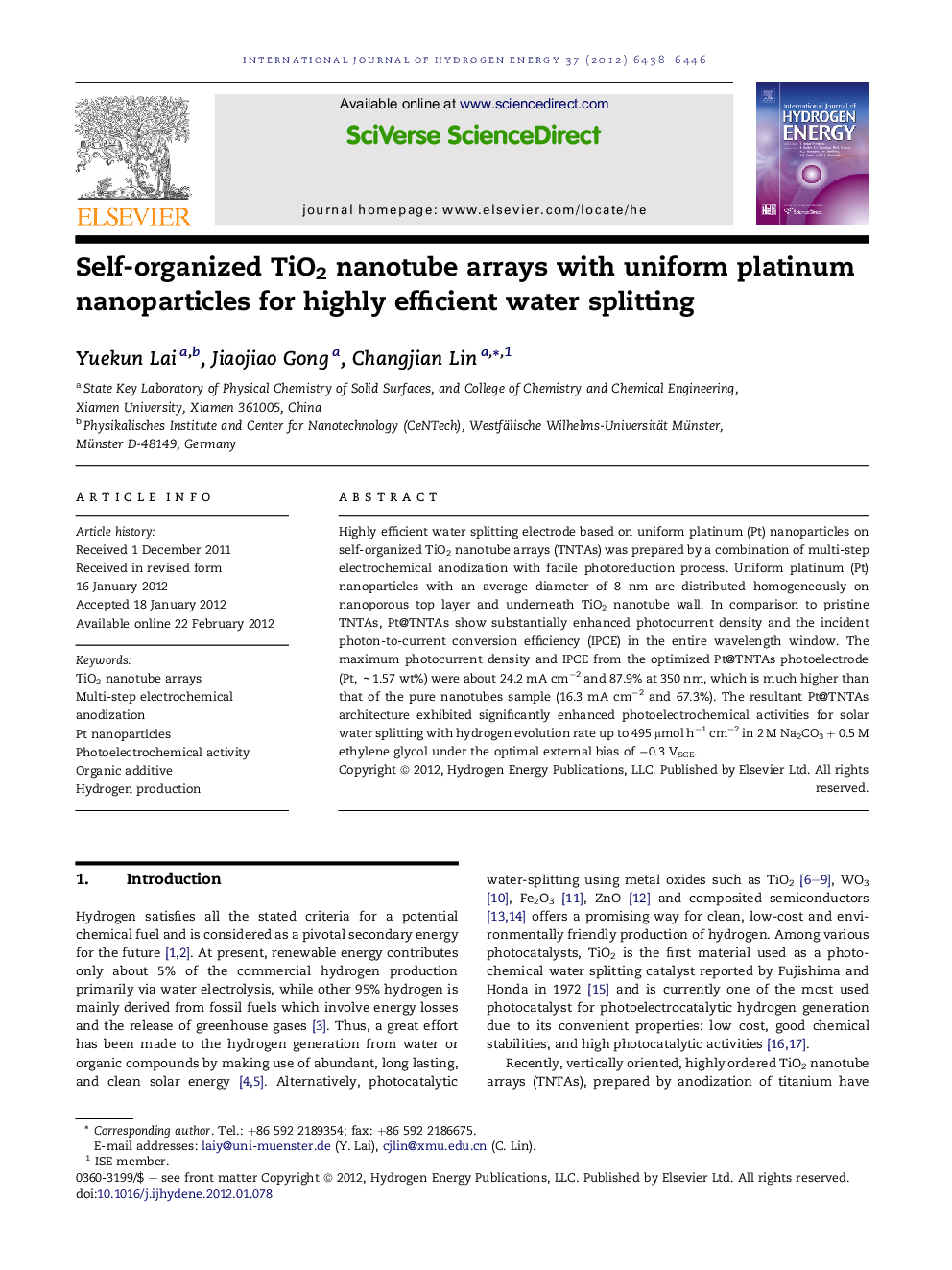| Article ID | Journal | Published Year | Pages | File Type |
|---|---|---|---|---|
| 1276585 | International Journal of Hydrogen Energy | 2012 | 9 Pages |
Highly efficient water splitting electrode based on uniform platinum (Pt) nanoparticles on self-organized TiO2 nanotube arrays (TNTAs) was prepared by a combination of multi-step electrochemical anodization with facile photoreduction process. Uniform platinum (Pt) nanoparticles with an average diameter of 8 nm are distributed homogeneously on nanoporous top layer and underneath TiO2 nanotube wall. In comparison to pristine TNTAs, Pt@TNTAs show substantially enhanced photocurrent density and the incident photon-to-current conversion efficiency (IPCE) in the entire wavelength window. The maximum photocurrent density and IPCE from the optimized Pt@TNTAs photoelectrode (Pt, ~1.57 wt%) were about 24.2 mA cm−2 and 87.9% at 350 nm, which is much higher than that of the pure nanotubes sample (16.3 mA cm−2 and 67.3%). The resultant Pt@TNTAs architecture exhibited significantly enhanced photoelectrochemical activities for solar water splitting with hydrogen evolution rate up to 495 μmol h−1 cm−2 in 2 M Na2CO3 + 0.5 M ethylene glycol under the optimal external bias of −0.3 VSCE.
Graphical abstractFigure optionsDownload full-size imageDownload as PowerPoint slideHighlights► Sub-10 nanometer Pt particles are prepared by a simple photo-reduction method. ► The effect of multi-step process and anodizing voltage are investigated. ► The hydrogen production rate are increased by decorating Pt nanoparticles. ► Organic additive enables enhance hydrogen production. ► Pt@TNTAs electrode is stable and promising for hydrogen generation.
